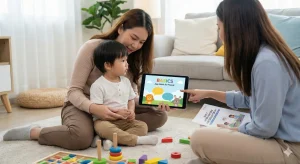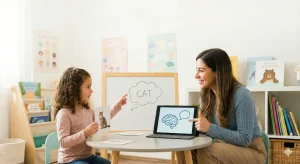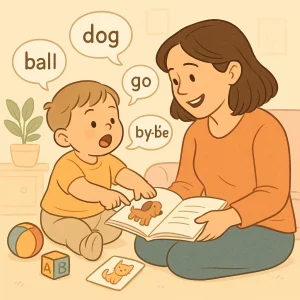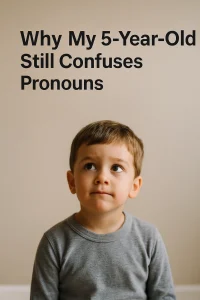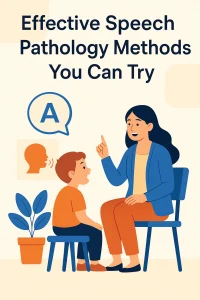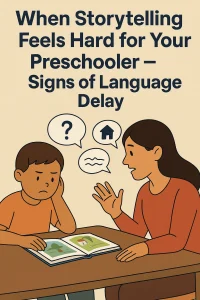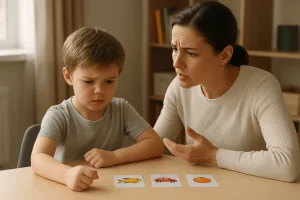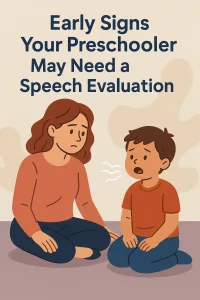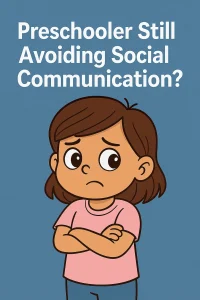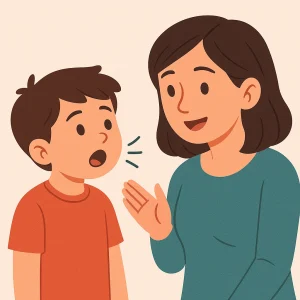Help Kids to Produce ‘Ch’ and ‘J’ Sounds Correctly
By Rajini D
Last Updated: April 19, 2024
Welcome to a journey where every word matters, and the sounds ‘ch’ and ‘j’ play starring roles in the theater of speech. If you’ve ever paused to consider the magic behind articulation, you’ll appreciate that it’s more than just the mechanics of moving our mouths. It’s about connecting, expressing, and engaging with the world around us. In this guide, we’ll dive into the nuances of articulation therapy, specifically focusing on the ‘ch’ and ‘j’ sounds—two letters that often challenge yet intrigue many learners.
Mastering these sounds is not just about achieving clarity in speech; it’s about unlocking new doors to effective communication. Imagine the confidence that comes from being understood and the joy of sharing stories without hesitation. Whether you’re supporting a young learner on their path to clear articulation or you’re on a personal quest to refine your speech, you’re in the right place.
Also Read: Speech Therapy Strategies for Kids: Mastering CH Words
Understanding ‘ch’ and ‘j’ Sounds
Diving into the heart of articulation, the ‘ch’ and ‘j’ sound stand out not just for their unique auditory signature but also for the distinct way they come to life in our mouths. Understanding these sounds is like unlocking a secret code that can enhance the clarity and expressiveness of our speech.
The Magic Behind ‘ch’ and ‘j’
The ‘ch’ sound, like in “chase” and “match,” involves your teeth, tongue, and the top of your mouth working closely together. It begins with your tongue quickly touching just behind your upper front teeth, then letting go fast so air can come out, making that ‘ch’ sound. This sound doesn’t make your vocal cords vibrate, so it’s called a “voiceless” sound by speech therapists.
On the flip side, the ‘j’ sound, which lights up words such as “jump” and “bridge,” follows a similar pattern but with a twist. It’s like the ‘ch’ sound but adds a gentle buzz. This buzz comes from your vocal cords vibrating, bringing the ‘j’ sound to life as a “voiced” sound.
Navigating Common Challenges
For many kids, and sometimes adults, sounds like ‘ch’ and ‘j’ can be tough. It’s usual to see in speech therapy at home where learners try hard to place their tongue correctly or use the right amount of air. Think about the child who says “tair” instead of “chair” or the adult who pauses before ‘j’ words, not sure how to start. These aren’t just obstacles in learning but steps towards getting it right with proper help.
Relatable Journeys Towards Clarity
Imagine a classroom where a young student has trouble saying “jump rope” because of the ‘j’ sound at the beginning. Or think of a family dinner where a kid excitedly talks about a “choo-choo train” he saw, but his ‘ch’ sound sounds more like a soft ‘sh.’ These situations are common for many people working on speaking more clearly.
Understanding ‘ch’ and ‘j’ sounds is about more than just how we make these sounds. It’s about gaining confidence, communicating clearly, and enjoying being understood. Whether you’re a parent helping your child or an adult working on your speech, remember, getting each sound right is a step towards showing the world who you really are.
Expert Techniques for Teaching ‘ch’ and ‘j’ Sounds
Stepping into the realm of articulation therapy, let’s navigate through some expert techniques designed to help learners master the ‘ch’ and ‘j’ sounds. The journey of learning can be filled with exploration and fun, especially with the right strategies in hand.
Elicitation Strategies for ‘ch’ and ‘j’ Sounds
Verbal Cues
The magic of teaching sounds often starts with verbal cues—simple, clear instructions or sounds that guide the learner toward the correct articulation. Here’s how to use verbal cues for ‘ch’ and ‘j’ sounds:
- For ‘ch’: Begin by emphasizing the unique combination that forms the ‘ch’ sound—it’s like a train saying “choo-choo.” Ask the learner to try mimicking this sound. Start slowly, breaking it down: say “t” followed quickly by “sh,” and then blend them together. This technique helps isolate the sounds before combining them, making it easier for learners to grasp.
- For ‘j’: Highlight that ‘j’ is similar to ‘ch’ but with added vibration. You can start by asking the learner to say “d” followed by “zh” (as in “beige”) and then blend them. Emphasizing the vocal cord vibration for ‘j’ can also be helpful. Say “/j/, /j/, /j/,” slowly and clearly, encouraging the learner to feel the buzz in their throat.
Visual/Tactile Cues
Combining verbal cues with visual and tactile cues can enrich the learning experience, making abstract sounds more concrete and understandable.
- For ‘ch’:
- Visual Cue: Use a small train toy or a picture of a train to reinforce the “choo-choo” sound. Demonstrate how the train moves and links the motion to the sound production.
- Tactile Cue: Guide the learner to place their hand gently on their throat to ensure no vibration occurs during the ‘ch’ sound, emphasizing its voiceless nature.
- For ‘j’:
- Visual Cue: Illustrate the ‘j’ sound using a jumping motion, symbolizing the vibratory action. You can also use a flashlight to signify the “lighting up” of the voice when the sound is made.
- Tactile Cue: Encourage the learner to place their hand on their throat to feel the vibration, making the distinction between ‘ch’ (no vibration) and ‘j’ (vibration).
These strategies not only make the session engaging but also cater to different learning styles, ensuring that the learner can connect with the sounds in a multisensory way.
Read more: Speech Sound Disorders: Causes, Treatment and Strategies
Fun Activities for Practice
Incorporating fun and play into articulation practice can transform the learning experience, making it both effective and delightful. Here are some engaging activities designed to help children practice the ‘ch’ and ‘j’ sounds, turning speech therapy into an adventure of joy and discovery.
Cha Cha Choo Choo for ‘ch’
Activity Overview: Create a lively train experience right at home with the “Cha Cha Choo Choo” game. This activity combines movement, rhythm, and the ‘ch’ sound practice in a dynamic and fun way.
How to Play:
- Set the Scene: Arrange chairs in a line to mimic a train and invite the child to be the conductor. Offer a conductor’s hat if available, to set the mood.
- Start the Engine: Begin by chanting “cha-cha-choo-choo” together, emphasizing the ‘ch’ sound. Use hand movements like pulling the train’s whistle to engage the child fully.
- Get Moving: As the “train” starts its journey, move around the room or house, stopping at “stations” to pick up imaginary passengers or cargo. At each stop, encourage the child to say “ch” words, like “choose,” “chair,” or “chocolate.”
- Cha-Cha Dance: Intermittently, switch from being a train to doing the cha-cha dance. This not only makes it fun but also reinforces the ‘ch’ sound in a different context.
J is for Jumping for ‘j’
Activity Overview: Jumping is not just a physical activity but also a fantastic way to practice the ‘j’ sound. “J is for Jumping” turns this simple action into a speech therapy tool, integrating movement with sound articulation.
How to Play:
- Prepare the Space: Lay out several “lily pads” or mats on the floor, each representing a spot to jump to.
- Sound it Out: Before each jump, have the child say a word that starts with the ‘j’ sound, like “jump,” “jelly,” or “jigsaw.”
- Leap and Learn: With each successful pronunciation, the child jumps to the next lily pad. Turn it into a mini-adventure by creating a story around why they’re jumping from pad to pad — perhaps they’re exploring a jungle or escaping a giant jelly blob!
- Jelly Dance: For a twist, when you say “jelly,” everyone must wobble like jelly. This adds a fun break and reinforces the sound in a memorable way.
These activities aren’t just about practicing sounds; they’re about creating moments of connection and joy between parents and children. Through play, children learn more effectively, retaining and applying their new skills with confidence.
Know more: Speak Like a Pro: Mastering Sounds with Articulation Places
Progressive Learning: From Sounds to Conversation
Let’s explore this path together, offering a roadmap from sounds to syllables, words, sentences, and, eventually, spontaneous conversation.
From Sounds to Syllables
- Starting with Sounds: The first treasure to uncover on this journey involves perfecting the individual ‘ch’ and ‘j’ sounds. Practice makes perfect, and repetition is the key to success. Use mirrors for visual feedback and turn practice sessions into playful experiments.
- Building to Syllables: Once these sounds are friends to the ear, blend them with vowels to form syllables. Start with simple combinations like “cha,” “che,” “chi,” “cho,” “chu” for ‘ch’ and “ja,” “je,” “ji,” “jo,” “ju” for ‘j’. Make this practice a game, perhaps a version of Simon Says, where actions are only followed if the syllable command is given correctly.
Crafting Words
Word Wizardry: With syllables as your building blocks, it’s time to construct words. Begin with words where the ‘ch’ and ‘j’ sounds are at the start, like “chop” or “jiggle,” then move them to the middle and end of words, like “kitchen” or “hedge.” Create a word garden, where each correctly articulated word plants a flower or a tree, visually tracking progress.
Formulating Sentences
Sentence Scavenger Hunt: Now that words are within your grasp, string them into sentences. Start simple, with phrases like “The cheese is chewy” or “The jar is jumping.” Gradually add complexity. Transform this into a scavenger hunt by finding items around the house that fit the sentences, making the practice both active and engaging.
Engaging in Conversation
Conversational Course: The final destination is fluid, free conversation. Initiate storytime where the tales revolve around characters like “Charlie the Cheetah” or “Jasmine the Juggler,” encouraging the child to describe scenarios involving these characters. Keep conversations light and fun, perhaps over a meal or during a walk, where the focus is on the joy of chatting rather than correct sound production.
Practical Tips for Every Stage:
- Patience and Praise: Celebrate every small victory along the way. Progress might be gradual, but every step forward is a step towards clear, confident communication.
- Everyday Integration: Incorporate practice into daily routines. Discuss what you’re “choosing” for breakfast or “jump” into discussions about the day’s activities.
- Seeking Support: Remember, it’s okay to seek help. If you find certain sounds continue to be elusive, consider reaching out to a speech therapist for expert guidance.
On this journey, each word is pronounced clearly, and each sentence is crafted with care, which brings your child closer to expressing their thoughts, dreams, and ideas with the world. At Wellness Hub, we’re here to support you every step of the way, offering resources, advice, and a community that understands the power of clear communication.
Read more: Unlocking Speech & Language: Key Milestones for 2-3 Year Olds (with Tips!)
Incorporating Articulation Therapy into Daily Life
The key is to weave these exercises seamlessly into daily routines, transforming mundane moments into opportunities for growth and learning. Here are practical, non-disruptive ways to integrate ‘ch’ and ‘j’ sound exercises into your day, keeping the process enjoyable and effective for both you and your child.
1. Making the Most of Mealtime
Mealtime is ripe with opportunities for practicing sounds. Discuss the choices on the menu, emphasizing words with ‘ch’ and ‘j’ sounds. “Would you choose chicken or juice?” This not only aids in sound practice but also in decision-making skills.
2. Storytime: A Gateway to Practice
Incorporate books with characters or themes that emphasize the ‘ch’ and ‘j’ sounds. For instance, reading about “Charlie the Cheerful Cheetah” can make practice feel like an adventure. Ask questions about the story to encourage your child to use the target sounds in their answers.
3. Transform Walks into Word Walks
Turn a simple walk into a ‘word walk’ by spotting objects that start with ‘ch’ and ‘j’. Whether it’s a “bench,” “church,” or “jacket,” every walk can become a treasure hunt for sounds, making learning an active and engaging pursuit.
4. Game Night with a Twist
Incorporate ‘ch’ and ‘j’ sounds into game night. Play charades where you act out words with the target sounds, or a board game where moves are contingent on correctly pronouncing words with ‘ch’ and ‘j’. This not only practices the sounds but also adds an element of fun and competition.
5. Daily Chores with a Learning Spin
Even daily chores can be an opportunity for articulation practice. Whether you’re “checking” items off a shopping list or “juggling” laundry and dishes, narrate your activities using words with the target sounds, encouraging your child to join in.
6. Reflection and Relaxation Time
End the day by reflecting on moments or things you were grateful for. Encourage your child to share their thoughts using sentences with ‘ch’ and ‘j’ sounds. This not only practices articulation but also instills a sense of gratitude.
7. Remember the Power of Praise
Throughout these activities, remember to offer abundant praise and encouragement. Celebrate successes, no matter how small, and always keep the atmosphere positive and supportive.
Signs You Might Need Professional Help
| Sign | Description | Action |
|---|---|---|
| Late Milestones | If your child’s speech clarity is noticeably behind that of their peers, it could indicate underlying challenges in speech development. Children typically reach speech clarity milestones at a predictable pace; significant deviation may necessitate further evaluation. | Consider scheduling an evaluation with a speech-language pathologist to understand if your child is on track or could benefit from intervention. |
| Sound Struggle | Persistent difficulty with specific sounds, such as ‘ch’ and ‘j’, beyond the typical age of mastery. This might manifest as substituting, omitting, or distorting these sounds consistently. | Seek advice from a speech therapist who can provide targeted strategies and exercises to overcome these articulation challenges. |
| Communication Frustration | Signs of avoidance or distress during speaking activities could indicate that your child is aware of their speech difficulties and feels anxious or embarrassed. This may lead to reduced participation in conversations or reluctance to speak in certain situations. | A Professional assessment is recommended to identify the root causes of this frustration and to develop a supportive plan that addresses both emotional and speech-related needs. |
| Comprehension Challenges | Difficulty in following directions, understanding questions, or processing verbal information may not only be related to articulation but also to broader language comprehension skills. | Consult with a speech and language specialist to assess your child’s comprehension abilities and to determine if these challenges are linked to articulation difficulties or if they signify broader language processing issues. |
When to Seek Professional Help
Navigating the journey of speech development can be a beautifully complex experience, filled with milestones and moments of joy. However, there may come a time when you wonder if the challenges your child faces are part of the typical learning curve or if they might benefit from professional support. Recognizing the signs that indicate the need for a speech-language pathologist (SLP) can ensure your child receives the timely assistance they need to thrive.
Signs to Watch For
- Age-Related Milestones: If your child is significantly behind their peers in speech and language development milestones, it might be time to consult an expert.
- Clarity of Speech: Persistent difficulty in producing specific sounds beyond the expected age can be a sign. For ‘ch’ and ‘j’ sounds, concerns might arise if these sounds are not consistently clear by age 7.
- Frustration During Communication: Notice if your child shows signs of frustration or avoids speaking due to difficulties with articulation. This can impact their social interactions and self-esteem.
- Understanding and Following Directions: Challenges in understanding or following simple directions can also indicate underlying issues beyond articulation.
The Role of Professional Support
A speech-language pathologist brings a wealth of knowledge and specialized techniques to the table, providing individualized strategies tailored to your child’s specific needs. Their expertise not only focuses on improving articulation but also on enhancing overall communication skills, ensuring your child can express themselves clearly and confidently.
How WellnessHub Can Support Your Journey
At WellnessHub, we understand the importance of finding the right support for your child’s speech and language development. Our platform offers access to a range of speech therapy services designed to meet the diverse needs of each family. Without overwhelming you with options, we aim to be a guiding light, offering resources, articles, and access to experienced speech-language pathologists who are committed to supporting your child’s journey toward clear, confident communication.
Conclusion
As we wrap up our exploration of articulation therapy for ‘ch’ and ‘j’ sounds, it’s important to remember the value of patience, practice, and positivity. Every effort you make, every small step forward with your child, is a big leap towards clearer communication. It’s about celebrating every sound mastered and every word that comes out more clearly. Remember, you’re not on this journey alone. Sharing your experiences and tips can help build a supportive community for others navigating similar paths.
At Wellness Hub, we’re here to support you and your child with resources and access to professionals who can guide you through the intricacies of speech development. Your feedback and stories are invaluable to us, helping to create a space where every child’s voice can be heard clearly. Together, let’s continue to support and celebrate every milestone on this journey towards clear, confident communication.
Frequently Asked Questions:
1. What is Articulation Therapy?
Articulation therapy is a type of speech therapy focused on helping individuals learn to pronounce sounds correctly. This therapy is especially helpful for children who have difficulty with specific sounds, such as ‘ch’ and ‘j’, ensuring they can communicate clearly and effectively.
2. At What Age Should a Child Master the ‘ch’ and ‘j’ Sounds?
Most children can pronounce the ‘ch’ and ‘j’ sounds correctly by the age of 7. If a child struggles with these sounds beyond this age, it might be beneficial to consult a speech-language pathologist for personalized articulation therapy.
3. How Can Parents Support Their Child’s Articulation at Home?
Parents can support their child’s articulation through everyday activities like reading stories with ‘ch’ and ‘j’ sounds, playing word games, and encouraging the child to talk about their day using words with these sounds. Consistent practice in a fun, stress-free environment is key.
4. When Should You Seek Professional Help for Articulation Issues?
If your child is significantly behind speech development milestones, shows frustration while communicating, or avoids speaking due to difficulty pronouncing certain sounds, it may be time to seek help from a speech-language pathologist.
5. How Does Wellness Hub Support Children with Articulation Needs?
Wellness Hub offers a range of resources and access to experienced speech-language pathologists to support children with articulation needs. From expert articles to personalized therapy sessions, Wellness Hub is dedicated to helping every child achieve clear and confident communication.
6. Can Articulation Therapy Be Fun?
Absolutely! Articulation therapy can include a variety of fun and engaging activities, such as playing sound-specific games, participating in storytelling that emphasizes target sounds, and using crafts or actions to make learning enjoyable for the child.
7. How Important is Parental Involvement in Articulation Therapy?
Parental involvement is crucial in articulation therapy. Parents can reinforce learning, provide consistent practice opportunities, and offer the encouragement and support necessary to make the therapy successful.
8. What Are Some Signs of Progress in Articulation Therapy?
Signs of progress include more consistent correct pronunciation of targeted sounds, increased confidence in speaking, and decreased frustration during communication. Celebrating these milestones can motivate continued effort and improvement.
9. Does Articulation Therapy Differ From General Speech Therapy?
Yes, articulation therapy is a specialized branch of speech therapy that focuses specifically on correcting pronunciations and the physical ability to produce sounds, such as ‘ch’ and ‘j’. While general speech therapy may address a broader range of communication issues, articulation therapy hones in on the mechanics of making sounds correctly.
10. Can Adults Benefit From Articulation Therapy for ‘ch’ and ‘j’ Sounds?
Absolutely. While articulation therapy is commonly associated with children, adults who struggle with the pronunciation of specific sounds, including ‘ch’ and ‘j’, can also see significant improvement through targeted therapy. It’s never too late to enhance your speech clarity and confidence.
About the Author:
Rajini Darugupally
M.Sc., Speech-Language Pathologist (9+ years of experience)
Rajini is a passionate and dedicated Speech-Language Pathologist with over 9+ years of experience, specializing in both developmental speech and language disorders in children and rehabilitation in adults. Driven by a desire to empower each individual to find their voice, Rajini brings a wealth of experience and a warm, genuine approach to therapy.
Currently, at Wellness Hub, she thrives in a team environment that values innovation, compassion, and achieving results for their clients.
Connect with Rajini to learn more about how she can help you or your loved one find their voice.
Book your Free Consultation Today
Parent/Caregiver Info:
Client’s Details:
* Error Message
